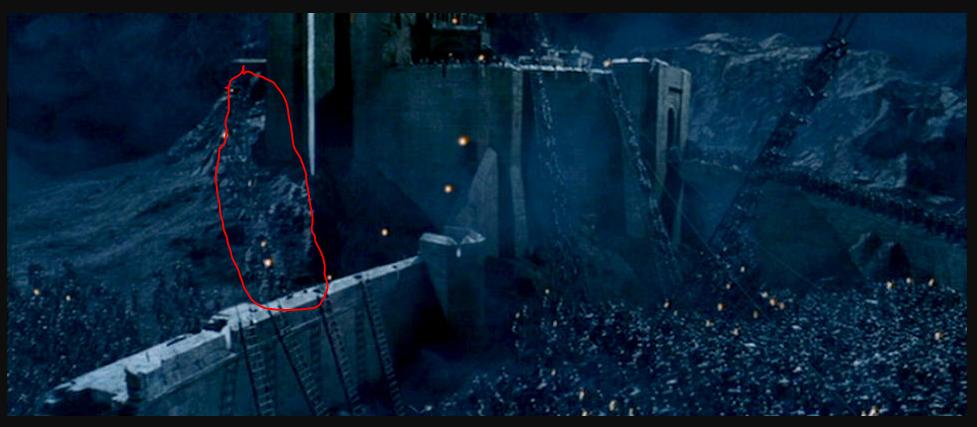The Deeping Wall protects the Deep behind the Keep, this is the only escape for the Defenders
What you seem to be misunderstanding is the layout of Helm's Deep. The Wall, defended the actual "Helm's Deep" The space we can see middle of the picture between the two rocks. The Hornburg, the castle you seem to think they're talking about, is impenetrable, but less so once you've taken the wall, and the deep behind it.
At Helm’s Gate, before the mouth of the Deep, there was a heel of rock thrust outward by the northern cliff. There upon its spur stood high walls of ancient stone,and within them was a lofty tower.
The wall was what stood between that armies and Helm's deep, as the Hornburg was inpenetrable. Once the wall falls, the Hornburg becomes completely surrounded and the attackers now have full strength to enter the Deep (the cleft between the rock, behind the Hornburg). Saruman is identifying that once the wall is destroyed they have access to the deep. This doesn't mean the Hornburg is lost, but at this point, Theoden is surrounded entirely.
There was a side door in the film, which could be accessed from the wall.
From the film's point of view, there was a staircase that led to a Sally Port in the Fortress. The breaching of the wall would allow the orcs onto the wall and access to the Sally port. This would give them another point of attack into the Hornburg, although at this point they've taken the Deep already.

The staircase can be seeb on the right-hand end of the curtain wall and on the left of the Keep

Tolkien's drawings of Helm's Deep and the Hornburg







